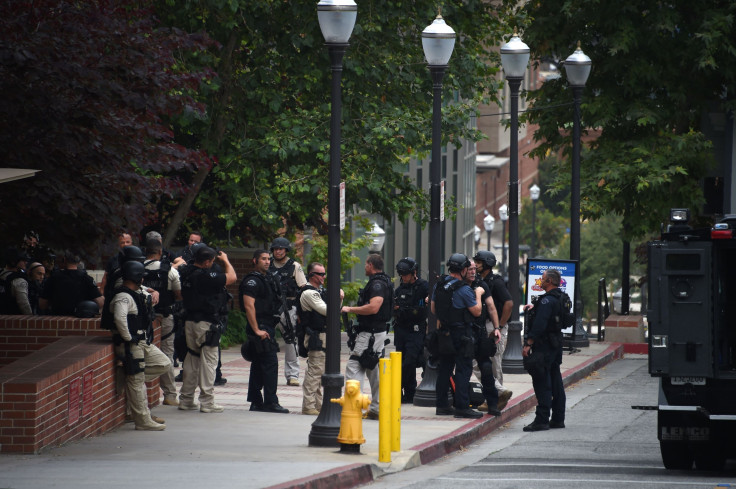UCLA Shooting: William Klug Is Latest Victim In Trend Of Student Violence Against College Professors

The campus shooting Wednesday of a University of California, Los Angeles associate professor of engineering in an apparent murder-suicide by a former student was a shock to many, but the tragedy is far from the first instance of violence — fatal or otherwise — against professors on U.S. college campuses. In fact, it is just the latest in a spate of violence and threats of violence against college professors at the hands of students in the past few years.
Officials identified former UCLA engineering graduate student Mainak Sarkar as the gunman in the shooting of engineering professor William Klug, who was reportedly on a “kill list” of people Sarkar targeted. But while much time and effort has been dedicated to studying the cause and prevention of violence in elementary schools, middle schools and high schools, violence against college professors is a lesser explored issue. Some believe arming professors is the only practical solution.
There have been more than a few incidents likely to make professors across the country consider that proposal. In March, a 24-year-old Salem State University student stabbed a professor in a men’s bathroom on the suburban Boston campus. In January, a 28-year-old El Camino College student in California was investigated for allegedly threatening to kill an English professor if he did not change the student’s failing grade. “I’m putting a bullet through your [expletive] head,” the student said at the time, according to court records. Similarly, in April 2015 a 33-year-old man in Florida was charged with threatening to kill an Embry-Riddle University professor because he was failing the professor’s class.
This is the blog linked to shooter Mainak Sarkar - explaining why he didn't like Prof. William Klug. pic.twitter.com/2xAeDQQ0ZD
— MarlaTellez (@MarlaTellez) June 2, 2016
A 2010 joint study by the Secret Service, the FBI and the Department of Education looked at all instances of targeted violence on college campuses since 1900. The study found more than a quarter of those incidents occurred in academic buildings, and in the 272 incidents that made up the study, 72 of the 281 deaths and 35 of the 247 injuries were university employees. The bodies of Klug and Sarkar were found in UCLA’s engineering building, where the shooting took place.
The study also found that in 13.7 percent of the incidents, the motivation behind the violence was retaliation for some specific action. Slightly more than 10 percent of the incidents cite academic stress or failure as being a motivating factor, as both are often present in problematic student-teacher relationships.
In the UCLA case, Sarkar reportedly held a grudge against Klug, who Sarkar called an “enemy” and “a sick person” in a now-deleted blog post. Sarkar advised students to “stay away from this guy” because, he wrote, Klug “cleverly stole all my code and gave it to another student. He made me really sick.”
#EXCLUSIVE: Sarkar had "kill list" w/ name of 2nd @UCLA prof. & a woman. Woman found dead in Sarkar's home-state, MN pic.twitter.com/OoPL6b2t39
— KTLA 5 Morning News (@KTLAMorningNews) June 2, 2016
College professors are no doubt at risk from these types of incidents, but the majority of studies on preventing violence in schools focuses on pre-college education, inspired by tragedies like the massacres in Columbine, Colorado, in 1999 and Newtown, Connecticut, in 2012. However, the findings of those studies often still apply to university settings. Those studies, along with the aforementioned 2010 study, advise teachers to monitor suspicious behavior and be vigilant regarding verbal threats, harassment or stalking behavior that are often prior indicators of a dangerous threat. In addition, the studies say, teachers should reach out for help in assessing the threat posed by a displeased student.
In 2003, the American Association of Collegiate Registrars and Admissions Officers warned professors should pay particular attention to displeased graduate level students because they were more likely to feel an urgency about academic records as such records relate to their careers, leading to heightened levels of stress. Sarkar was a Ph.D. student of Klug’s.
Many argue the only way for professors to truly be safe is to be armed. Recent state legislation and court rulings have allowed residents in eight states to carry concealed weapons on public college campuses in Colorado, Idaho, Kansas, Mississippi, Oregon, Texas, Utah and Wisconsin. Arkansas and Tennessee allow certain faculty members to carry weapons on campus, but not students or members of the general public.
The Texas Legislature passed a bill to allow concealed firearms to be carried in campus buildings just last year. Supporters assert the bill was a logical step in advancing campus safety.
“I don’t think [the University of Texas System] will suddenly become the ‘Wild West’ with open carry and guns flying,” Allison Peregory, chairman of the Young Conservatives of Texas, told CNN in October. “UT has had concealed carry just on campus for the past 20 years. It’s not a foreign concept. Campus carry is not this new radical thought process.”
While no one has all the answers, not everyone agrees more guns is a smart solution. University of Texas System Chancellor William McRaven, a former Navy SEALs admiral, is one of the most prominent opponents of open carry on college campuses.
“I’ve spent my whole life around guns. I grew up in Texas hunting. I spent 37 years in the military. I like guns, but I just don’t think having them on campus is the right place,” McRaven said last year, according to NPR. “I have been shot at before. And so I know what and how people react when they are being shot at. So if you aren’t trained in that environment you probably aren’t going to react the way people think you will react naturally. And consequently having another armed individual in the middle of an active shooter profile, in some cases could create more confusion than helping to resolve the problem.”
© Copyright IBTimes 2024. All rights reserved.












